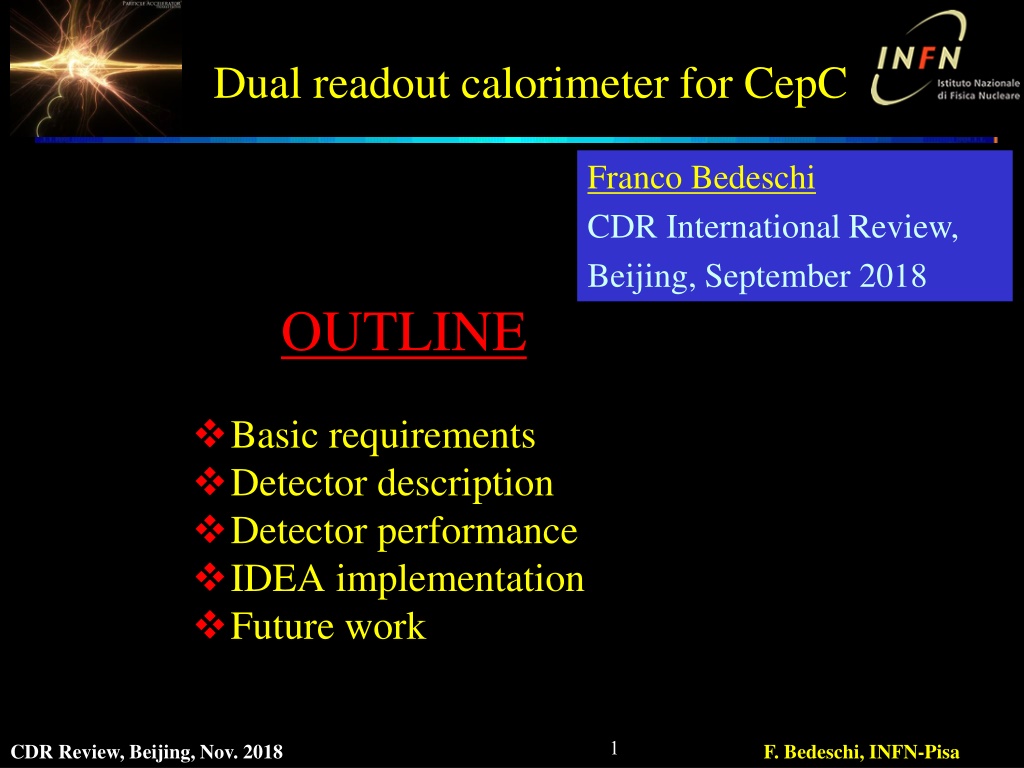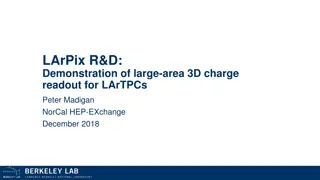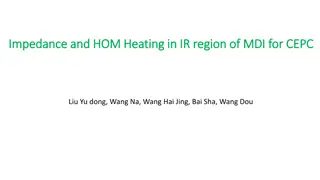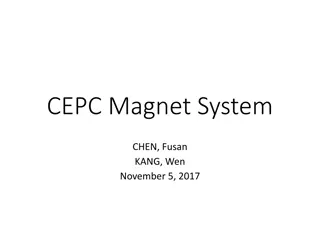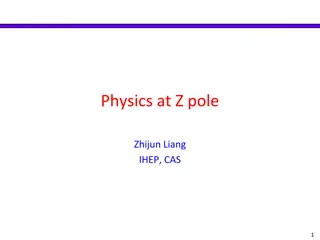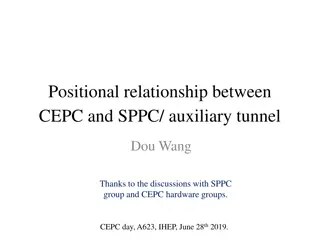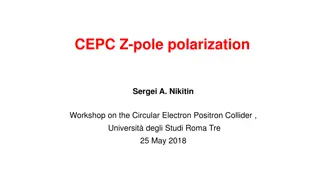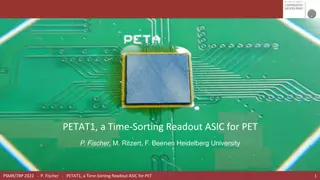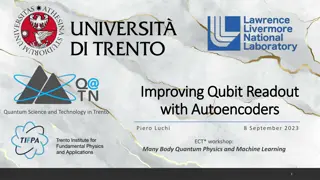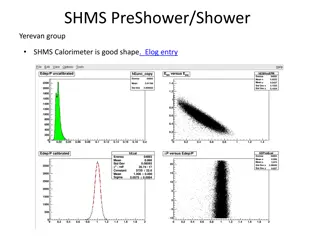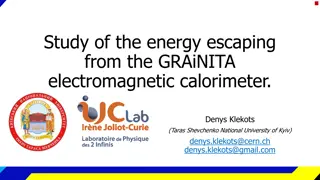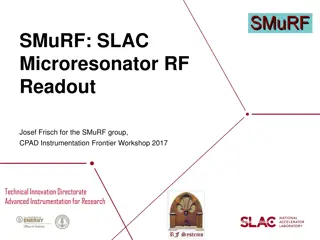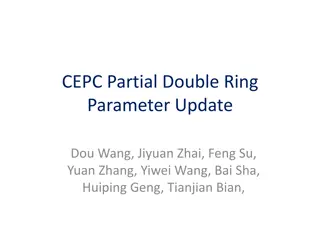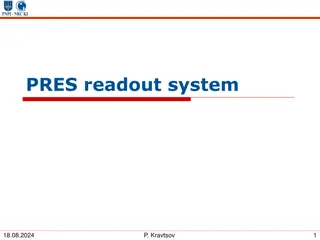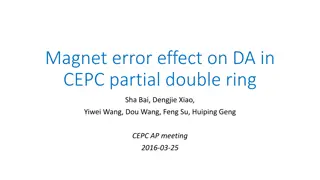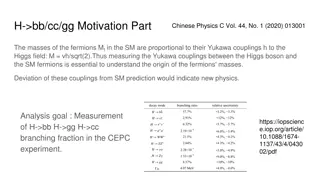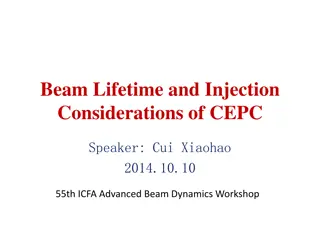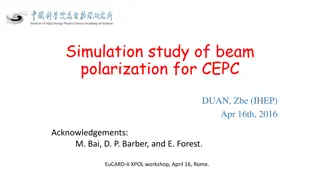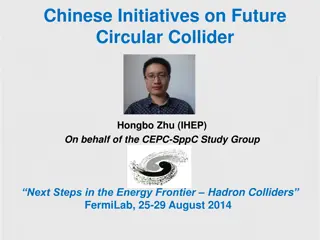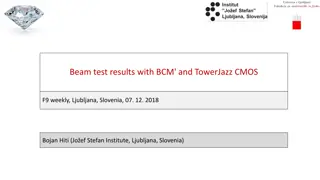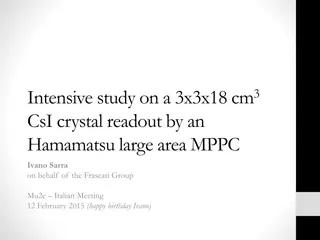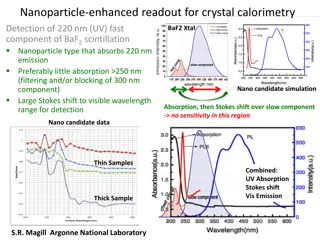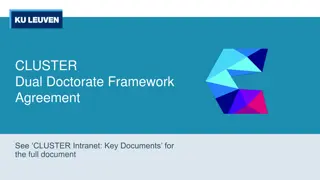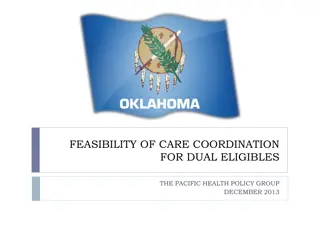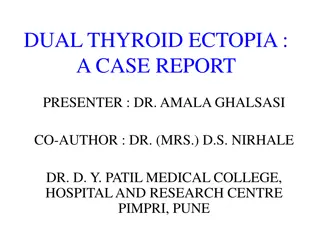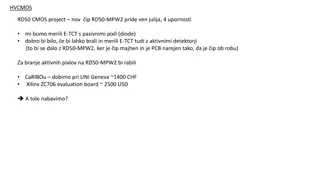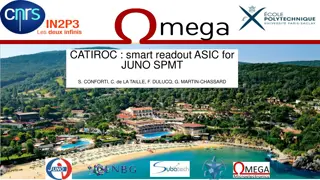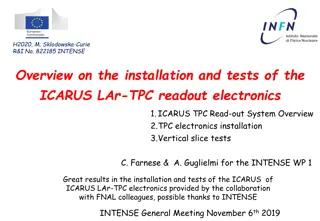Dual-Readout Calorimeter for CepC: Overview and Key Features
The dual-readout calorimeter for CepC, as discussed in the International Review in Beijing, September 2018, is designed to optimize electromagnetic, hadronic, and jet resolution. With features like large sampling fraction for good EM resolution, event-by-event correction for EM fluctuations, and intrinsic transverse granularity, the calorimeter offers particle ID capabilities and fast detector response. It utilizes alternate clear and scintillating fibers in a metal matrix for measurement, calibration, and energy correction, ensuring accurate detection of charged particles and Cherenkov light.
Download Presentation

Please find below an Image/Link to download the presentation.
The content on the website is provided AS IS for your information and personal use only. It may not be sold, licensed, or shared on other websites without obtaining consent from the author. Download presentation by click this link. If you encounter any issues during the download, it is possible that the publisher has removed the file from their server.
E N D
Presentation Transcript
Dual readout calorimeter for CepC Franco Bedeschi CDR International Review, Beijing, September 2018 OUTLINE Basic requirements Detector description Detector performance IDEA implementation Future work 1 CDR Review, Beijing, Nov. 2018 F. Bedeschi, INFN-Pisa
e+e- HZ physics constraints Calorimeters: H ECAL resolution As good as possible at least 16%/ ? + 1% H qq, VV ECAL+HCAL resolution As good as possible at least 3-4% on jets from W,Z decay (*) LHC may observe these channels with similar ot better precision before CepC 2 CDR Review, Beijing, Nov. 2018 F. Bedeschi, INFN-Pisa
e+e- Z/WW physics constraints Additional EW physics drivers: High precision acceptance determination Good e discrimination 3 CDR Review, Beijing, Nov. 2018 F. Bedeschi, INFN-Pisa
Other drivers Z + + + + min + + @ 2 m important in tau and HF physics No High granularity/Pre-shower identification Overlap with + may require longitudinal segmentation @ 2 m 35% l (e ) + ( ) l ( ) l ( ) l 4 FCC week, Amsterdam, April 2018 F. Bedeschi, INFN-Pisa
Dual Readout calorimeter Dual Readout Calorimeters main features Designed to optimize EM, hadronic and jet resolution Large sampling fraction for good EM resolution Event by event correction for EM fluctuations in showers and jets Intrinsic transverse granularity up to 1-2 mm Potential for longitudinal segmentation with timing or specific fiber geometries Particle ID capabilities Fast detector response All electronics in the back simplifies cooling and access 5 CDR Review, Beijing, Nov. 2018 F. Bedeschi, INFN-Pisa
Basic configuration Alternate clear and scintillating fibers in metal matrix Scintillating fibers sensitive to all charged particles Clear fibers sense only Cherenkov light Mostly electrons and positrons 6 CDR Review, Beijing, Nov. 2018 F. Bedeschi, INFN-Pisa
Working principle Measure simultaneously: Scintillation signal (S) Cherenkov signal (Q) Calibrate both signals with e- Unfold event by event fem to obtain corrected energy 7 CDR Review, Beijing, Nov. 2018 F. Bedeschi, INFN-Pisa
Performance EM Use test beam data to tune simulation Use simulation to correct for lateral leakage 8 CDR Review, Beijing, Nov. 2018 F. Bedeschi, INFN-Pisa
Radial shower profile Test beam data 9 CDR Review, Beijing, Nov. 2018 F. Bedeschi, INFN-Pisa
Radial shower profile Test beam tuned simulation 100 GeV 0 50 GeV electrons 10 CDR Review, Beijing, Nov. 2018 F. Bedeschi, INFN-Pisa
Performance HAD Use test beam data to tune simulation Use simulation to correct for lateral leakage 81 and 91 GeV jet separation 11 CDR Review, Beijing, Nov. 2018 F. Bedeschi, INFN-Pisa
Particle ID Test beam Test beam tuned simulation 80 GeV electron proton separation Rejection power 600 @ 98% efficiency Hadrons Mu Electrons S+Q S Q 12 CDR Review, Beijing, Nov. 2018 F. Bedeschi, INFN-Pisa
IDEA implementation Calorimeter outside thin coil Pre-shower in front Improve p0 ID Improve acceptance determination 13 CDR Review, Beijing, Nov. 2018 F. Bedeschi, INFN-Pisa
IDEA implementation Projective geometry Full coverage Wedge geometry 14 CDR Review, Beijing, Nov. 2018 F. Bedeschi, INFN-Pisa
Readout Dual layer SiPM readout Avoids optical cross-talk 3rd test beam in progress 15 CDR Review, Beijing, Nov. 2018 F. Bedeschi, INFN-Pisa
Readout Group SiPM to reduce numbers of channels 8 fibers/channel 5.6 mm granularity Parallel to serial readout ASIC under study ASIC SiPM Output FPGA 16 CDR Review, Beijing, Nov. 2018 F. Bedeschi, INFN-Pisa
Future work Physics benchmarks with full simulation Mechanics: Metal matrix technology Fast module assembly Calorimeter support Electronics SiPM readout optimization (pixel size and x-talk) Define readout chain ASIC selection or development Signal processing on detector Readout and back-end design Explore timing for longitudinal information CDR Review, Beijing, Nov. 2018 17 F. Bedeschi, INFN-Pisa
Backup 18 CDR Review, Beijing, Nov. 2018 F. Bedeschi, INFN-Pisa
e+e- operation modes Wide range of running conditions at CepC Z pole (90 GeV): ~ 10 ns between beam crossing High luminosity O(1035) ZH (250 GeV): ~ 1 s between beam crossing Moderate luminosity - O(1034) 19 CDR Review, Beijing, Nov. 2018 F. Bedeschi, INFN-Pisa
CepC, FCC, ILC, CLIC luminosity comparison Z WW ZH ?? 100xLEP FCC SR power/beam < 50 MW CepC SR power/beam < 30 MW 20 INFN Town Meeting, Roma 2018 F. Bedeschi, INFN-Pisa
2T solenoid Two options: Large bore (R=3.7 m) calorimeter inside Smaller bore (R=2.2 m) calorimeter outside Preferred: simpler/ Extreme EM resolution not needed Thick calorimeter Thin (30 cm): total = 0.74 X0(0.16 ) at = 90 Courtesy of H. ten Kate et al. 21 CDR Review, Beijing, Nov. 2018 F. Bedeschi, INFN-Pisa
Calorimeter Copper dual readout calorimeter Demonstrated EM resolution Observed Had resolution dominated by lateral leakage (~6%) Courtesy of DREAM/RD52 22 CDR Review, Beijing, Nov. 2018 F. Bedeschi, INFN-Pisa
